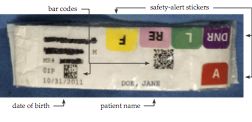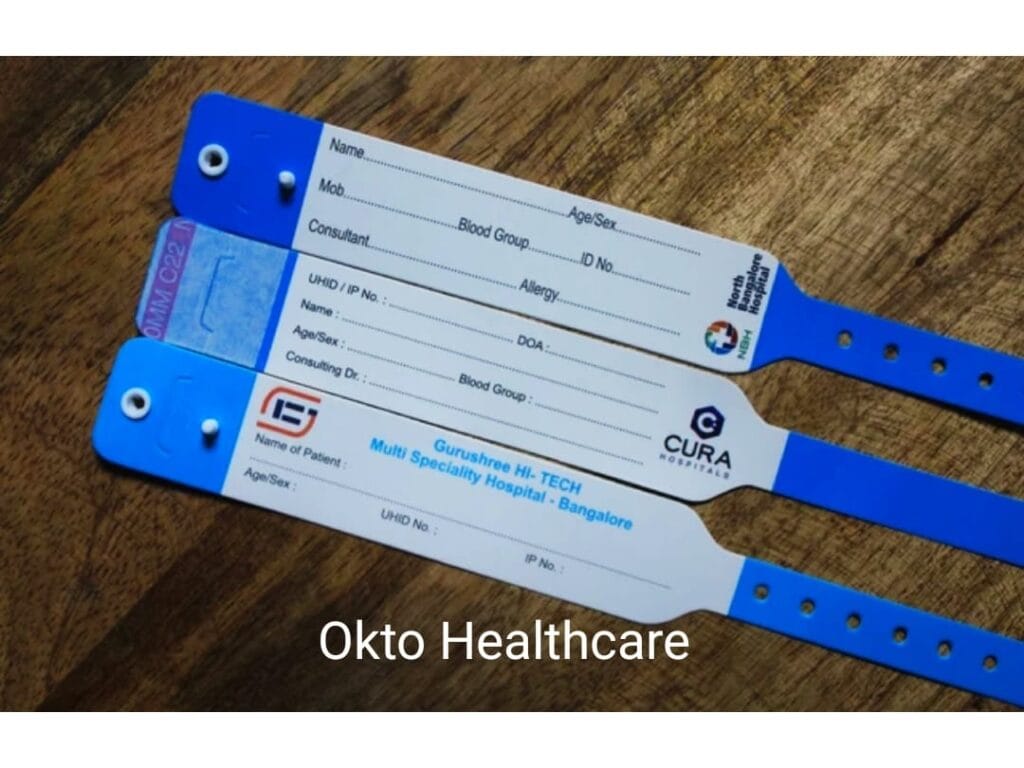Patient Identification Band: Making Sure Conformity and Security in Medical care
Patient Identification Band: Making Sure Conformity and Security in Medical care
Blog Article
Streamlining Person Care With Reliable Recognition Bands
The application of effective recognition bands is a critical component in improving patient treatment within healthcare setups. These bands not just serve to mitigate the threats related to person misidentification however additionally simplify communication amongst clinical employees, consequently fostering a much safer setting. Numerous kinds of recognition bands accommodate particular demands, from resilient wristbands for grownups to specialized bands for babies and vital cases. As the landscape of individual recognition develops, one have to consider the ramifications of these systems on total healthcare delivery and individual end results. What developments await in this essential area?
Relevance of Person Identification
Ensuring precise client identification is vital in medical care setups, as it directly affects the security and high quality of care provided. Misidentification can result in significant mistakes, consisting of administering the incorrect drug, doing wrong treatments, or miscommunicating crucial patient details. Such errors not only jeopardize patient safety and security but can also result in lawful implications and decreased rely on healthcare systems.
Reliable individual recognition is basic to developing a protected environment where clients receive appropriate and personalized care. It facilitates the exact documentation of case histories, allergies, and therapy strategies, ensuring that healthcare companies have access to necessary info at all times. Durable identification methods aid streamline interaction among clinical team, enhancing collaboration and minimizing the risk of blunders.

Kinds of Identification Bands
Recognition bands play an important role in preserving exact client records and boosting safety within healthcare settings. Numerous kinds of identification bands are used to provide to the particular needs and demands of various client populaces.

An additional type is the ankle joint band, which is particularly valuable for babies and newborns, making sure that recognition remains undamaged also during treatment treatments. Specialized bands, such as those for allergy informs or drop risk indications, give additional layers of security by drawing immediate interest to crucial person conditions.
Recently, electronic identification bands have actually gained popularity, integrating barcodes or RFID modern technology that can be checked to rapidly obtain person information. These bands streamline process and decrease the risk of human mistake during patient recognition procedures.
Advantages of Reliable Recognition
Efficient recognition of patients with the use of recognition bands contributes dramatically to total patient safety and care top quality. By making sure that each individual is precisely determined, doctor can effectively match medical therapies and treatments to the proper person, minimizing the risk of mistakes. This is specifically important in settings with high individual turnover, where the potential for page misidentification is greater.
Additionally, efficient identification bands enhance interaction amongst health care teams. Exact and clear individual identification fosters collaboration and makes certain that all employee know a person's certain requirements and medical history. This interaction is vital for providing coordinated treatment, specifically in emergency situation circumstances where time is crucial.

Inevitably, effective identification with making use of identification bands not only safeguards people but additionally advertises a culture of safety within medical care facilities (Patient Identification Band). By prioritizing exact recognition, health care organizations can improve outcomes and boost the general patient experience
Implementing Recognition Solutions
While the significance of patient recognition is well acknowledged, basics the application of robust recognition systems presents a complicated challenge for healthcare companies. Establishing effective recognition systems requires an extensive approach, incorporating innovation, personnel training, and procedure integration.
First, organizations have to choose ideal identification technologies, such as barcode scanning, RFID, or biometric systems. Patient Identification Band. These technologies must be evaluated based upon cost, usability, and compatibility with existing facilities. A pilot program can assist identify potential problems prior to full-scale application
Next, comprehensive training for team is necessary. All personnel need to recognize the significance of accurate person identification and be competent in the usage of the selected modern technologies. Regular training updates and evaluations can enhance finest techniques and ensure continued conformity.
Additionally, health care companies should establish standardized treatments for client identification throughout all divisions, enhancing and reducing inconsistencies interaction. Regular audits can help identify spaces in adherence to these procedures.

Inevitably, a reliable implementation of recognition systems not just enhances client security but also fosters a culture of accountability and diligence within healthcare setups, making certain regular and dependable patient treatment.
Future Trends in Person Recognition
Innovations in modern technology are established to transform person identification techniques in medical care settings. The assimilation of biometric recognition methods, such as fingerprinting and facial acknowledgment, is expected to enhance precision and protection. These innovations can considerably reduce the risk of misidentification, ensuring that individuals receive the proper therapies and medications.
Furthermore, the execution of blockchain modern technology for individual records is acquiring grip. This decentralized method can offer a protected and tamper-proof technique for managing person identifications, therefore improving accessibility to vital details across various healthcare service providers.
One more trend is the boosting use mobile health applications that leverage QR codes for individual identification. These applications permit for real-time updates and easy accessibility to person information, empowering health care specialists to make informed decisions swiftly.
Furthermore, synthetic knowledge (AI) is positioned to play a key function in examining patient identification data, recognizing patterns, and forecasting possible identification errors before they happen.
As these modern technologies advance, they promise not only to enhance individual safety and security yet likewise to improve the general performance of healthcare distribution systems. Embracing these advancements will be vital for future-proofing person treatment practices.
Conclusion
To conclude, effective identification bands are important for improving client safety and care quality within healthcare settings. By reducing the risks connected with misidentification, these bands facilitate timely and accurate info access, inevitably boosting interaction among healthcare providers. The application of robust recognition systems not just promotes a society of safety and security yet additionally go now settings healthcare organizations to adapt to future fads in client identification technology, making certain optimal end results for people in diverse professional settings.
As the landscape of person identification evolves, one have to take into consideration the implications of these systems on overall medical care shipment and patient end results.Reliable individual identification is basic to establishing a secure setting where patients get appropriate and tailored treatment. Ultimately, prioritizing reliable individual identification strategies not only cultivates a culture of safety and security yet also adds to boosted client outcomes and general complete satisfaction with medical care services.
Efficient recognition of individuals with the usage of recognition bands contributes dramatically to total client safety and security and care quality. The application of durable identification systems not just cultivates a culture of security yet additionally placements medical care institutions to adapt to future fads in patient recognition modern technology, making sure optimum end results for patients in diverse professional environments.
Report this page